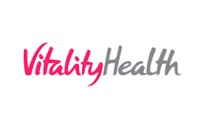What is overactive bladder (OAB)?
Overactive bladder is a condition characterised by a sudden, uncontrollable urge to urinate. This can often lead to involuntary loss of urine, known as urgency incontinence. OAB occurs due to the bladder muscles contracting involuntarily even when the bladder isn’t full. This can significantly impact daily life and activities, leading to potential social embarrassment and reduced quality of life
Symptoms
The primary symptoms of an overactive bladder include:
- Urgency: A sudden, strong need to urinate immediately.
- Frequency: Needing to urinate more than eight times in 24 hours.
- Nocturia: Waking up more than once during the night to urinate.
- Urge Incontinence:
- An urgent need to urinate, followed immediately by involuntary loss of urine.
Treatment Options
The treatment options for overactive bladder include:
Lifestyle modifications:
- Fluid management: Reducing intake of fluids, especially before bedtime.
- Dietary changes: Avoiing bladder irritants such as caffeine, alcohol, and spicy foods.
- Bladder training: Scheduling toilet visits and gradually increasing the time between urinations.
Pelvic floor exercises:
- Strengthening the pelvic floor muscles to better control urination.
Medication:
- Anticholinergics: Medications that relax the bladder muscles to prevent spasms.
- Beta-3 Agonists: Drugs that help relax the bladder muscle to increase its capacity.
Medical devices:
- Bladder nerve stimulation: Using electrical impulses to influence bladder function.
- Catheter: In some severe cases, a catheter might be used to empty the bladder.
Injections:
- Botox injections: Botulinum toxin injections can relax the bladder muscles for several months.
Surgery:
- Bladder augmentation: Increasing bladder capacity by adding a piece of intestine to the bladder.
- Urinary diversion: Creating a new way for urine to leave the body.
Management of OAB
Management usually involves the following steps:
- Diagnosis: This includes a thorough medical history, physical examination, and tests such as urine analysis, bladder diaries, and urodynamic testing.
- Initial management: Implementing lifestyle changes and pelvic floor exercises.
- Medication: If initial management is insufficient, medications may be prescribed.
- Advanced therapies: If medications and exercises do not work, advanced therapies like nerve stimulation or Botox injections may be considered.
- Surgery: In cases where other treatments fail, surgical options are explored.
Risks associated with treatment
The risks associated with OAB treatments vary depending on the type of treatment:
- Lifestyle Changes and Exercises: Generally low risk but require adherence and patience.
- Medication: Possible side effects include dry mouth, constipation, blurred vision, and cognitive effects.
- Botox injections: Risks include urinary retention and urinary tract infections.
- Surgery: Risks include infections, complications from anaesthesia, and problems related to the specific surgical procedure performed.
Recovery process
Recovery from OAB treatment depends on the type of treatment:
- Lifestyle Changes and Exercises: Continuous practice and monitoring, with improvement over weeks to months.
- Medication: Regular follow-ups to adjust dosages and monitor side effects.
- Botox injections and Nerve Stimulation: Periodic treatments with follow-up appointments to assess effectiveness and manage side effects.
- Surgery: Recovery may involve a hospital stay, followed by several weeks to months of recovery at home. Post-surgical rehabilitation and monitoring are essential to ensure successful outcomes.
Why choose Birmingham Urology Centre
At Birmingham Urology Clinic, our experienced urologists provide comprehensive evaluation and treatment for overactive bladder. We use the latest diagnostic tools and techniques to ensure accurate diagnosis and effective treatment plans tailored to each patient’s needs.
Contact us today to book an appointment or for more information on overactive bladder and treatment options.








